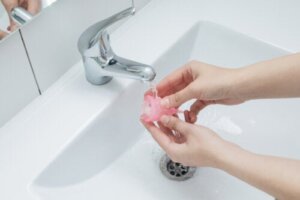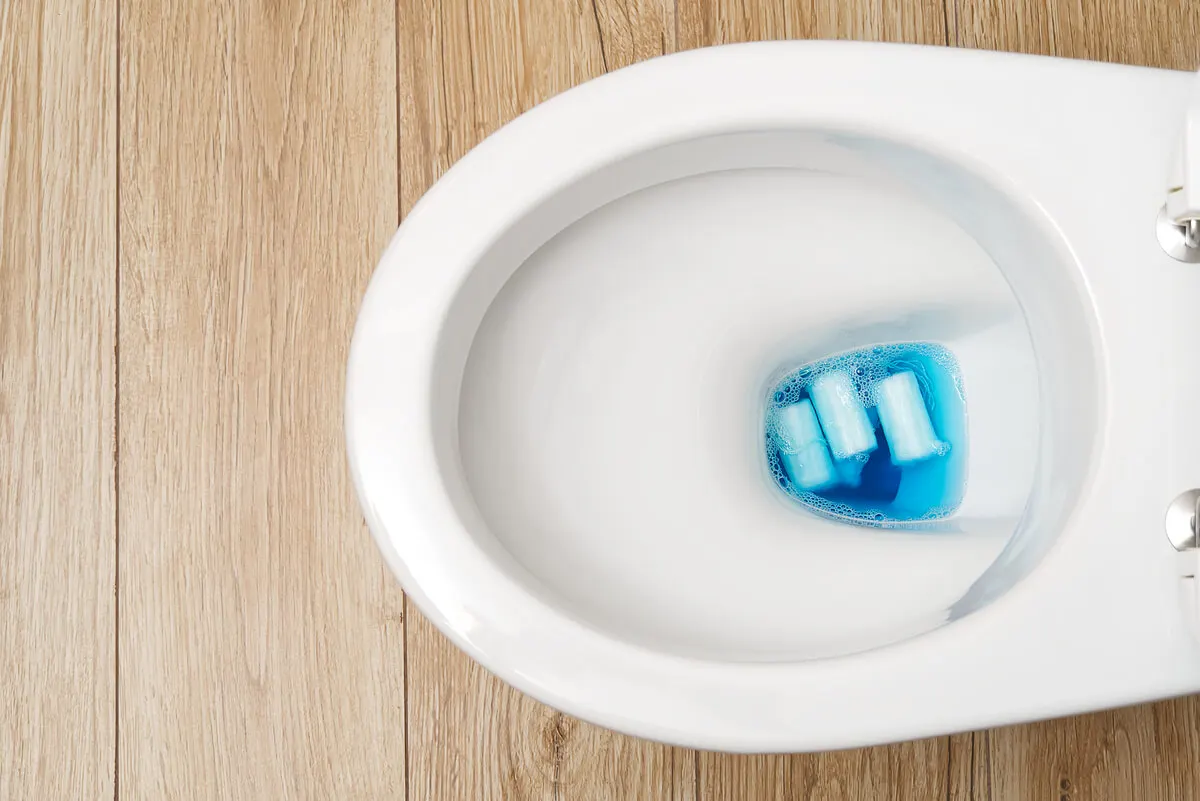How to Sterilize and Clean the Menstrual Cup

Cleaning the menstrual cup is as easy as it is necessary for it to be a durable and healthy tool. During menstruation, women may suffer from cramps, mood swings, headaches, swelling, breast tenderness, and other discomforts, in addition to some discomfort from using sanitary napkins or tampons.
The cups promise safety and comfort in those days. The particularity of being reusable for up to 10 years makes them very popular among the alternatives to contain the blood that leaves the body during the menstural cycle. In addition, these devices contribute to environmental conservation.
In fact, an article in National Geographic highlights that, although it’s difficult to specify how much plastic waste comes from menstrual products, in 2018 alone, 5.8 billion tampons were purchased in the United States. All ended up in landfills as plastic waste.
The importance of hygiene in a menstrual cup
Overal, the menstrual cup provides some great benefits:
- It’s a discreet element,
- It’s budget-friendly,
- It is an environmentally sustainable method.
In fact, the Chilean Journal of Obstetrics and Gynecology defines it this way. These containers are designed with flexible material, such as silicone or medical rubber and hypoallergenic.
Although they don’t pose a risk of infection, as can happen with other intimate sanitary items linked to menstrual toxic shock syndrome (MTS), sterilizing and cleaning the cup is essential if you want it to be safe.
Research published in The Lancet supports the effectiveness of the product for controlling the flow of menstruation and reports a decrease in candidiasis in those who use it. However, some adverse reactions may be linked to improper use of the device or irregularities in cleaning it.

Like this article? You may also like to read: Natural Remedies for Menstrual Cramps and Other Menstrual Problems
Sterilization of the menstrual cup
Sterilize the cup before inserting it for the first time in your body. Also do this after each menstrual period to remove blood residue.
The common method is to boil it for 3 to 10 minutes in a saucepan. The recommended temperature is 140 °C so any microorganisms die.
The pot must be deep enough so that the cup is completely submerged. Once the boiling is complete, turn off the burner and wait for the water to cool before removing the device. Don’t neglect this process, because if it evaporates, the silicone could burn or melt.
Another way to sterilize the product is with exclusive modern devices. They consist of portable, collapsible containers that you fill with water and into which you insert the cup to boil in the microwave. In this case, follow the manufacturer’s instructions.
We think you may be interested in reading this, too: 5 Facts Every Woman Should Know About Ovarian Cysts
How to clean the menstrual cup?
As for the regular cleaning of the vaginal cup, this is something that should be done regularly as you’re using it. It’s not necessary to heat it for each change; while you’re menstruating, it’s enough to empty it and wash it with cold water to insert it again. If you’re in a public restroom, you can clean it with toilet paper.
Since menstrual are made of materials that resist bacteria, it’s not necessary to use soap on them. However, if you decide to do so, choose pH-neutral soaps, as they’re better than perfumed or antibacterial soaps.
Some cups come with small holes in the rim. Make sure to check that they’re clean, as they’re the places that generate the vacuum for the device to attach to the vagina.
Extra alternatives to clean the menstrual cup
Both when it come to sterilizing and cleaning the menstrual cup, there are some complementary instruments to the conventional ones. There are sterilizing tablets that work with cold water and UV and ozone disinfection devices. These options make it easier to sanitize when away from home.
You can also apply alcohol-free and antibacterial cleaners. They’re sold in aerosol form and are sprayed on the device as follows:
- Wash the cup with water (and soap, if desired).
- Dry it before spraying the cleaner.
- Rub the cup with the substance.
- Rinse it well to remove the cleaner.

How often should it be cleaned?
The cleanliness of the vaginal cup depends on the intensity of the flow. When it’s scarce, you can take it out and clean it with water a couple of times a day; but if it’s abundant, the process could be repeated as many times as you consider necessary.
Outside of menstruation, it’s time to clean the cup if it changes its tone to brown or yellowish. This happens with the passage of time as a result of iron in the blood that adheres to and stains the rubber. It’s not something to be concerned about, however. You can remove the pigmentation by soaking the cup in hydrogen peroxide overnight or until it returns to its original color. Afterwards, you should simply wash to remove traces of the chemical.
When should you replace your menstrual cup?
You know it’s time to buy a new menstrual cup in the following circumstances:
- There’s evidence of cracking.
- It burns when sterilized.
- You must change from a universal to a large size due to a gynecological condition.
- 10 years have passed since you purchased it.
Menstrual cups last longer if you take good care of them and store them well. Time the sterilization of the cup so as not to burn it, respect hygiene guidelines, and store it in a cotton bag.
All cited sources were thoroughly reviewed by our team to ensure their quality, reliability, currency, and validity. The bibliography of this article was considered reliable and of academic or scientific accuracy.
- Borunda A. Cómo tampones, toallitas y protectores se volvieron tan poco sustentables. National Geographic. National Geographic Society. 2019. https://www.nationalgeographicla.com/plastico/tampones-protectores-poco-sustentables
- Doncel CW, Guarnizo-Tole M, Mosquera BO, Prado-Galarza M. La copa menstrual, una alternativa de higiene femenina. Revisión de literatura. Revista Chilena de Ginecología y Obstetricia. Vol. 85. Núm. 1. pp. 99-109. Chile; 2020. https://www.mendeley.com/catalogue/620aa1ba-afd3-3a12-a21b-f0cce2d36488/?utm_source=desktop&utm_medium=1.19.4&utm_campaign=open_catalog&userDocumentId=%7B943d0bf8-68ea-45c0-9837-0c99e59f1437%7D
- Lenchner M, Mason L, Nyothach E, Sivakami M, Van Eijk A, Zulaika G. Usos, fugas, aceptabilidad, seguridad y disponibilidad de la copa menstrual: una revisión sistemática y un metaanálisis. The Lancet. Vol. 4. Núm. 8. pp. 376-393. Reino Unido; 2019. https://www.thelancet.com/journals/lanpub/article/PIIS2468-2667(19)30111-2/fulltext
- Síndrome del shock tóxico menstrual. Fundación Femeba. Argentina. https://www.fundacionfemeba.org.ar/blog/farmacologia-7/post/sindrome-de-shock-toxico-menstrual-47483
This text is provided for informational purposes only and does not replace consultation with a professional. If in doubt, consult your specialist.








